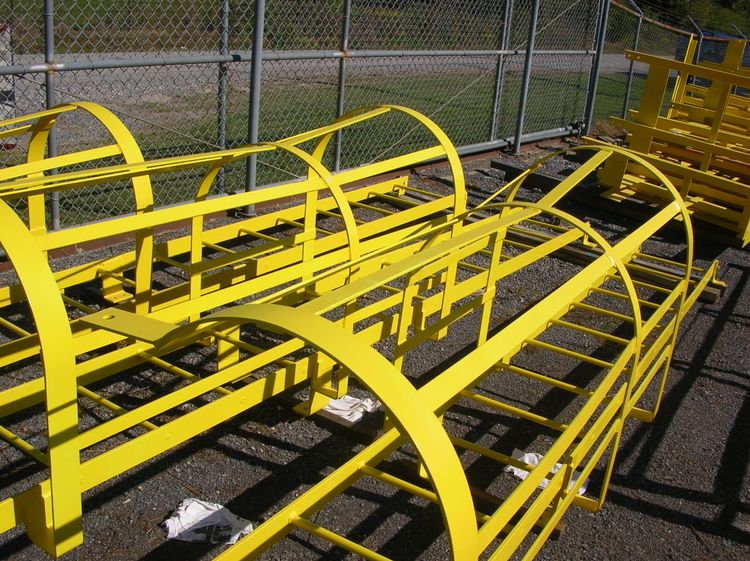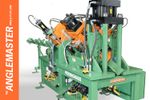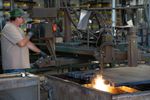If you’ve ever needed or fabricated a fixed ladder for an industrial site, you know that the Occupational Health and Safety Administration (OSHA) has an extensive set of rules governing what you can and can’t do with this particular type of industrial access equipment.
The rules are part of OSHA’s general rules regarding ladders (Standard Number 1926.1053), so they are mixed in with rules regarding portable ladders, wood ladders, and all sorts of other ladder variations that don’t apply to fixed ladders.
To help foster compliance with OSHA’s important safety standards, we decided to summarize the parts that pertain to what most of the people we talk to are generally looking for — fixed ladders made out of carbon steel, stainless steel, or aluminum.
(We’ll save safety standards for industrial stairs for another blog post.)
General Fixed Ladder Requirements
Load
Your fixed ladder has to be able to support two loads of 250 pounds on two consecutive rungs. When meeting this requirement, you also have to factor in additional load due to ice, impact, rigging, wind, or anything else that may affect the load on your ladder, such as supplemental safety devices.
Clearance
There has to be at least seven inches between ladder rungs and any “obstruction” behind the ladder — usually the surface the ladder is fixed to. An exception to this rule is made for elevator shafts, where fixed ladders only need to be four and a half inches away from the surface they are mounted on.
On the climbing side of a fixed ladder, there needs to be at least 30 inches of clearance between the center of a rung and any obstruction. Most fixed ladders, such as those mounted on tanks, have open air on the climbing side. This requirement doesn’t come into play in those instances. But in cases where a ladder is mounted in a well of some sort, such as an elevator shaft or manhole, it’s important to keep this one in mind. There are, however, exceptions to the 30-inch rule. When unavoidable obstructions are encountered — say, an electrical box — it’s OK to reduce the clearance on the climbing side of a fixed ladder to 24 inches, provided that some sort of deflection device is installed to guide climbers around the obstruction.
If your fixed ladder doesn’t have a cage or isn’t mounted in a well, there needs to be at least 15 inches between it and any permanent objects on both sides, measured from the ladder’s centerline.
Lastly, if you happen to have several ladders mounted side-by-side, there has to be at least 16 inches between their side rails.
Side Rails
If you have a long ladder, you’re going to have to splice several pieces of metal together to make continuous side rails. Any side rail assembly made of multiple parts has to be at least as strong as a one-piece side rail made of the same material.
Rungs
Rungs must be engineered to minimize slipping. Corrugated, knurled, or dimpled patterns meet this requirement, as does coating your rungs with some sort of skid-resistant material.
Extensions
When a fixed ladder reaches the top access level of a landing platform, its side rails need to extend 42 inches above the surface.
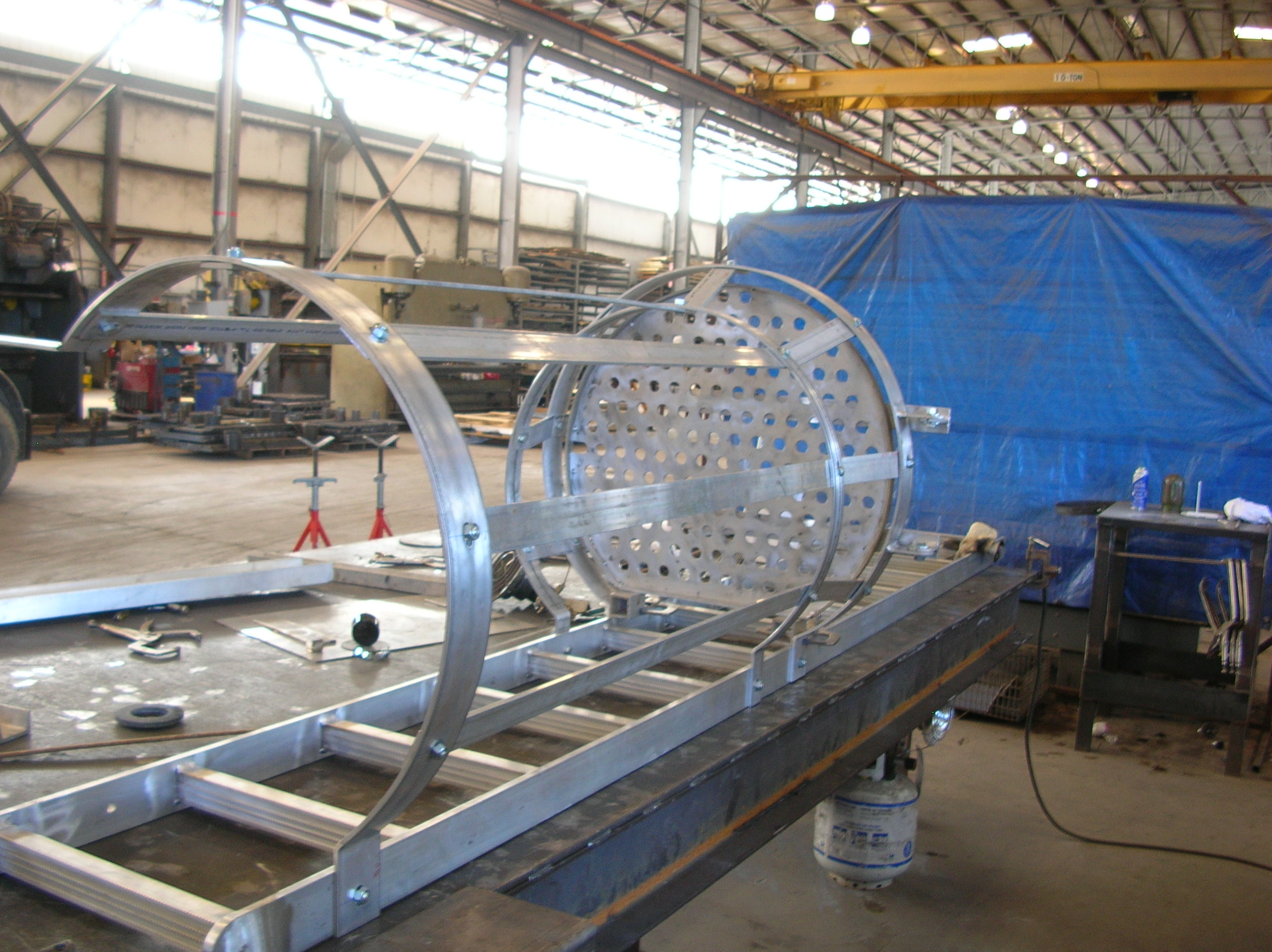
If a side-step ladder has an extension, that extension needs to extend 42 inches above the point of egress and must be equipped with rungs.
If it’s a side-step ladder, it should include rungs in the extension.
If it’s a through fixed ladder, don’t include any steps or rungs in the extension.
The side rails of a through fixed ladder’s extension need to be flared in such a way that there are 24–30 inches of clearance between side rails.
If a side-step ladder has an extension, that extension needs to extend 42 inches above the point of egress and must be equipped with rungs.
Platforms & Landings
When two or more fixed ladders are needed to reach an elevated work area, there needs to be a platform or landing to bridge the divide between the ladders. (Please note: There are OSHA rules
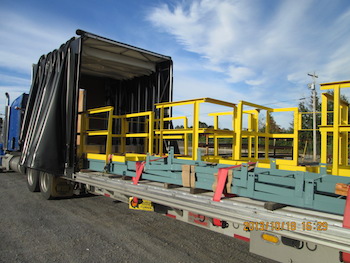
regarding platforms as landings as well, so make sure to familiarize yourself with them, too, if you find yourself in a situation where you need a platform or landing.)
At the point where a through fixed ladders meets an access or egress point, it needs to have a step-across distance of no less than 7 inches and no more than 12 inches. This distance is measured from the ladder centerline to the nearest landing area edge.
If an access plan requires two or more fixed ladders, they must be accompanied by rest platforms or landings to bridge the space between ladders.
Safety Features
It goes without saying that all ladder components need to be surfaced so that climbers aren’t at risk for lacerations, punctures, or snagging.
If a fixed ladder has a vertical height of 24 feet or more, it needs to be equipped with one of the following safety features:
- ladder safety device
- self-retracting lifeline
- rest platform
- cage or well
Additional Rules for Caged Fixed Ladders
As noted above, OSHA has several approved methods for guaranteeing worker safety when using fixed ladders for access, including self-retracting lifelines and rest platforms. We recommend a cage, though, because a cage is a sturdy, permanent solution that can be manufactured as part of the ladder assembly.
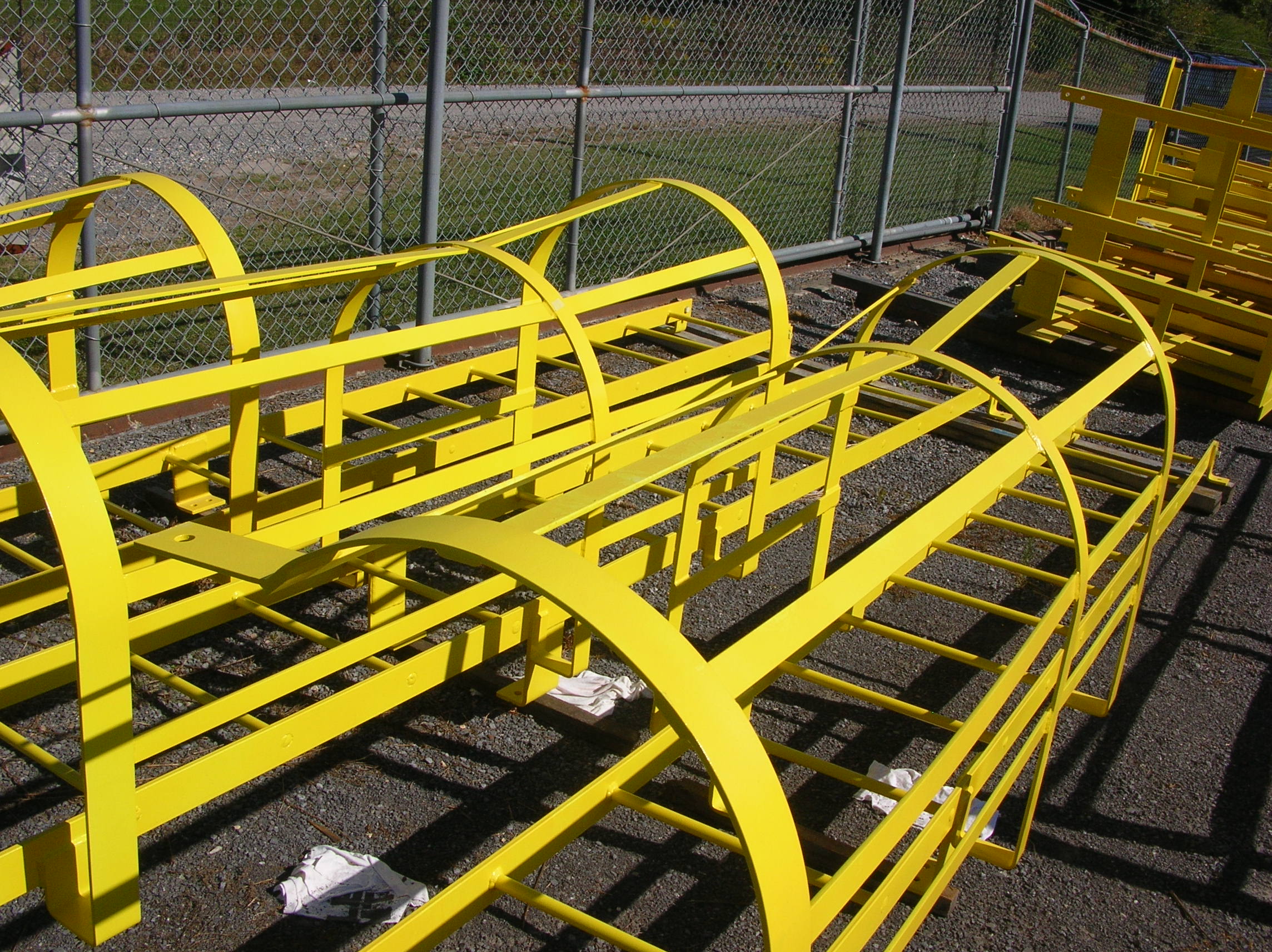
Horizontal bands on caged ladders must be less than 4 feet apart. The vertical bars, which can be no more than 9 1/2 inches apart, must be on the inside of the horizontal bands.
Unlike safety devices, a cage will stand up over time and won’t need to be replaced until the ladder itself is due for replacement. And while platforms and wells are equally — if not more — secure, they require modifying the structures a fixed ladder attaches to.
Horizontal bands on caged ladders must be less than 4 feet apart. The vertical bars, which can be no more than 9 1/2 inches apart, must be on the inside of the horizontal bands.
Cages for fixed ladders need to abide by all of the following requirements:
- The horizontal bands of a cage must be fastened to the side rails or directly to the structure, building, or equipment the fixed ladder provides access to.
- The horizontal bands have to be less than 4 feet apart, measured from the center of each band.
- A cage’s vertical bars must be on the inside of the horizontal bands and need to be fastened to them.
- Vertical bars need to be at most 9 1/2 inches apart, measured from the center of each bar.
- Cages have to be between 27 and 30 inches away from the centerline of a ladder’s rungs and can’t be any less than 27 inches wide.
- No projections are allowed inside a cage.
- The top of a cage has to be at least 42 inches above the point of access at the top of the ladder.
- The bottom of a cage needs to be between 7 feet and 8 feet above the point of access at the bottom of the ladder.
- If the bottom of a cage flares, it has to do so in such a way that the distance all around of the bottom horizontal band is no more than 4 inches of the distance all around of the next higher band.
Partner with a Knowledgeable Metal Fabricator
This is just a basic overview of OSHA’s rules regarding fixed ladders and will pertain to most situations. However, every installation is unique and there are always exceptions. Make sure you’re compliant by knowing all the details of your case and familiarizing yourself with all OSHA standards that may apply.
It can’t hurt, too, to partner with a metal fabricator that has experience in this area. They’ll know what questions to ask and will flag any potential risks during planning, as well as production. Southern Metal Fabricators has been making fixed ladders and industrial access equipment for over 20 years. If you’d like to learn more about how we approach these sorts of projects, please don’t hesitate to call us at 1.888.421.9661.
